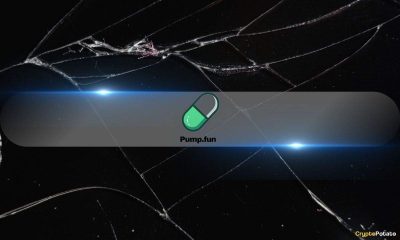Commodities
Why are crude oil prices rising? Concerns over Russian supplies

Crude oil price and the dollar have always been linked. Oil prices rose on Monday amid positive sentiment on stock exchanges and a weakening U.S. dollar. Concerns over Russian supplies also supported the quotations. On the daily chart, the Brent futures form a kind of rising triangle with the upper bound of $107-108 per barrel. A break-up of this boundary might open the way to a further move to the area of $115-116 per barrel.
Why are crude oil prices rising? Russian oil and gas
As you can see, crude oil prices and charts began to rise on the back of recent news. Yesterday it became known that the flow of gas pipeline Nord Stream – 1 will again be limited. This time it is planned to shut down one more gas turbine engine “due to the end of the time between repairs”. Problems with gas supplies are perceived as an escalation of tensions between Russia and the EU in the energy sphere and increase anxiety in the market over Russian hydrocarbon supplies. Against such a backdrop, oil futures buyers are feeling more confident.
The volume of Russian exports is one of the key uncertainties in the second half of 2022 and in 2023. In December comes into force the European embargo on maritime oil supplies from Russia, and in February 2023 on the supply of petroleum products. Whether Russia will be able to avoid production cuts depends on how successful it will be in redirecting supplies to Asia. As of July 15, the average volume of Russian oil supplies to the Asian region was 1.7 million b/d, compared to 1.2 million b/d in January 2022. 1.3 million b/d is still going to Europe, for which new buyers have yet to be found.
Fed meeting
Tomorrow, the U.S. regulator will make an interest rate decision. According to the FedWatch Tool, markets are laying 77% odds that the rate will rise by 0.75pc, with another 23% accounting for 1pc. Even more important will be the Fed’s view of future monetary policy: whether the regulator is willing to raise rates further in an attempt to cool inflation. The more decisive the Fed will be in raising rates, the more the markets will fear an economic recession and a possible cooling of oil demand. Lower demand could make up for capacity shortages and lower prices. Crude oil prices and futures began to rise.
WTI contracts at $8.5 lower
U.S. WTI discount to Brent by more than $8 a barrel amid cooling U.S. gasoline demand. Gasoline prices have been falling steadily over the past week. The national average price per gallon was $4,355, down from $4,521 a week ago, according to the AAA Automobile Association. Experts expect a $4 per gallon increase in the coming weeks.
Why are crude oil prices rising today? Demand for gasoline cannot be called weak, but it is lower than it was in July of last year. Last week, EIA data showed fuel inventories rising, and that put pressure on prices, even though the rest of the indicators were rather bullish. This week, the dynamics of gasoline inventories in the U.S. may remain the focus of investors’ attention.
As of this morning, Brent futures are up 1.8% and trading around $107 a barrel.
Commodities
Oil prices rise; U.S. crude inventories plunge, Russia-Ukraine truce eyed
Commodities
India’s Reliance to stop buying Venezuelan oil over US tariffs, sources say
Commodities
Oil prices climb on Venezuela supply worries

 Forex3 years ago
Forex3 years agoForex Today: the dollar is gaining strength amid gloomy sentiment at the start of the Fed’s week

 Forex3 years ago
Forex3 years agoUnbiased review of Pocket Option broker

 Forex3 years ago
Forex3 years agoDollar to pound sterling exchange rate today: Pound plummeted to its lowest since 1985

 Forex3 years ago
Forex3 years agoHow is the Australian dollar doing today?

 Cryptocurrency3 years ago
Cryptocurrency3 years agoWhat happened in the crypto market – current events today

 World3 years ago
World3 years agoWhy are modern video games an art form?

 Commodities3 years ago
Commodities3 years agoCopper continues to fall in price on expectations of lower demand in China

 Economy3 years ago
Economy3 years agoCrude oil tankers double in price due to EU anti-Russian sanctions

































